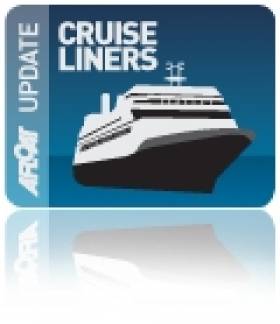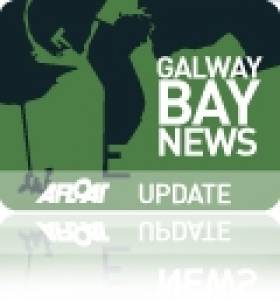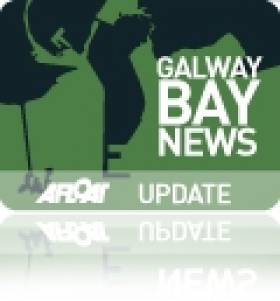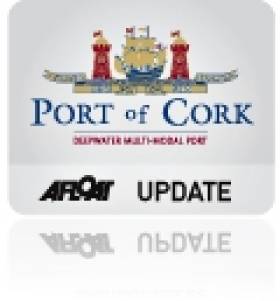Displaying items by tag: An Bord Pleanéala
Environmental Measures by Galway Port Part of Docks Development
#PortEnvironment - Environmental compensatory measures made as part of the Galway Harbour Company’s plans for the expansion of the city’s docks will it is hoped by the port accepted by the National Parks and Wildlife Service.
According to Galway Bay FM (which has more here), the port company has sent a report to the NPWS in order to comply with requirements of An Bord Pleanála.
A meeting is due to take place between Galway Harbour Company and the NPWS once the report has been considered by the NPWS, with a view to sending a formal report to the planning authority.
In September, as previously reported on Afloat.ie, the harbour company was invited to progress plans for a port expansion through the fast-track IROPI process.
#CruiseConcerns – One of the country's main ports is due to lodge a multi-million development bid with An Bord Pleanala in the next ten days, writes the Herald.ie
The controversial Dun Laoghaire planning application, which has been met with opposition from residents and several local political representatives, is being submitted by Dun Laoghaire Harbour Company.
The harbour company is seeking permission for an €18m cruise berth facility to cater for jumbo cruise ships, which would mean passengers will be able to walk on to the port.
The company hopes the cruise berth will be a boost for the local economy, as predicted in studies carried out so far.
For more on the story, click here.
Galway Harbour CEO Cites Port’s Redevelopment Necessary to Stop Decline
#Redevelopment - Galway Harbour could face terminal decline unless a proposed €126m redevelopment is given the go ahead, a full oral hearing was told of about the project, reports yesterday's Irish Times.
The CEO of Galway Harbour, Eamon Bradshaw, told the An Bord Pleanála hearing that ships are sometimes left sitting off Mutton Island for long periods because the current port was effectively only open for four hours during any 24-hour cycle.
Mr Bradshaw pointed out that the new national ports policy identified the harbour as a strategic regional hub for petroleum, while its current location close to the city centre limited its potential for further expansion. The proposed redevelopment will also allow the port to accommodate cruise ships.
Mr Bradshaw said the board of Galway Harbour was obliged to look at the future of the port as a commercial entity capable of servicing the western region.
"The alternative was to see the port decline and with it the possible disappearance of a tradition of commercial trading from Galway going back over a 1,000 years," he told the hearing.
Harbour master Brian Sheridan said Galway Harbour Company was advised as far back as October 2000 that trade would go into decline over 25 years without a process of relocating and upgrading.
"The operation of the harbour as it currently exists has become increasingly difficult over the past decade," Mr Sheridan said. "This is largely due to the size of ships now calling at Galway. On a number of occasions, I have had to deny access of ships which I considered too large for the port, as the risk to the marine environment and public safety was too great."
Captain Sheridan said the proposed relocation of an oil jetty would resolve risk and related planning issues: "For reasons of public health and safety, the relocation of the commercial business is imperative."
The newspaper has much more to report, click HERE.
In addition a photograph of cargoship,Thior Gitta which Afloat.ie reported on her departure from Galway Port in 2011 for Mauritius. She was loaded with a pair of former Aran Islands sister ferries, that were beset by incidents prior to the 8,300 mile delivery voyage to the Indian Ocean, to where they serve new owners.
Plans for €126m Redevelopment of Galway Harbour Outlined
#PortHearing - Detailed plans for a proposed €126 million redevelopment of Galway Harbour, The Irish Times reports, would allow cruise liners to be accommodated which were outlined during the first day of an oral hearing in the city.
Experts representing the Galway Harbour Company outlined the perceived need for the 85.4 hectare project, which is expected to take eight years to complete, to the An Bord Pleanála hearing.
The proposed four-phase plan involves the construction of new deep-water berths to the south of the existing port, a marina and nautical centre. Construction of the first phase has been estimated to cost €52 million.
For much more on this port planning hearing, click HERE.
An Bord Pleanála Hearing Opens into Galway Harbour Port Plans
#PortHearing- An Bord Pleanála is to open an oral hearing today, writes The Irish Times, into the first phase of a €126m expansion of Galway Harbour that aims to provide cruise liner berths, a marina and potential “mini Sydney opera house” if approved.
As previously reported on Afloat.ie, a preliminary hearing took place last week prior to today’s start of An Bord Plenaeála hearing on the four-phase port extension plan. The plan would involve reclaiming 27 hectares of environmentally sensitive bay area to move the existing port south and provide deepwater berths.
The harbour company said it has consulted with the European Commission on invoking a clause under the EU habitats directive which involves offering compensation for loss of fragile environment. The IROPI (imperative reasons of overriding public interest) provision under article 6 (4) of the EU habitats directive was first used to seek approval for a motorway in Hessen, Germany.
For more on this story (click HERE) which refers to Shannon-Foynes Port Company, one of those who have registered its opposition to the neighbouring mid-west’s port exansion plan.
Port Of Cork and GAA Planning Hearings Set for Same Day
#PortofCork – According to The Irish Examiner, two of the biggest developments to come before planners in recent years will get under way when oral hearings will be made on the same day in Cork next month.
Inspectors from An Bord Pleanála will listen to proposals by the Port of Cork for a €100m upgrade of its container terminal at Ringaskiddy, while the GAA's plans for a €67m regeneration of Páirc Uí Chaoimh will also come in for scrutiny.
The port oral hearing will take place at Cork International Airport Hotel and the GAA's will be held at the Imperial Hotel. Both start on September 10 and are expected to take up to three days to complete.
It is the second time the port authority has applied to An Bord Pleanála for a major upgrade at Ringaskiddy. To read more click HERE.




























































